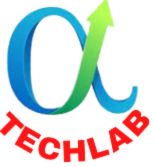9 class computer chapter- 2 Creating Textual Communication
Introduction: Textual Communication
Textual communication is a form of communication that involves exchanging written messages between two or more people. This can take many forms, including emails, text messages, instant messages, online chat rooms, and social media platforms. Textual communication can be synchronous, meaning that messages are sent and received in real-time, or asynchronous, meaning that messages are sent and received at different times. This form of communication has become increasingly popular in recent years due to the proliferation of mobile devices and the internet, which has made it easier than ever before for people to communicate with one another regardless of their physical location.
key concept of Textual Communication
There are several key concepts of textual communication, including:
Clarity: Effective textual communication requires clarity in both the language used and the meaning conveyed. Messages should be easy to understand and free of ambiguity.
Tone: Tone is an important aspect of textual communication because it can influence how messages are perceived. It is important to be mindful of tone and use language that is appropriate for the situation.
Context: Understanding the context of a message is crucial to interpreting it correctly. Textual communication can sometimes lack context, so it is important to provide enough information to ensure that the recipient understands the message correctly.
Feedback: Textual communication is a two-way process that requires feedback. It is important to listen to feedback and respond appropriately to ensure that the message is received and understood.
Etiquette: Textual communication has its own set of etiquette rules, such as using proper grammar and spelling, avoiding all caps, and using appropriate emojis and emoticons.
Accessibility: Textual communication should be accessible to everyone, regardless of their abilities or disabilities. This means using plain language and avoiding jargon, and ensuring that the communication is compatible with assistive technologies.
Important Features of Textual Communication
Some important features of textual communication include:
Record-keeping: Textual communication creates a permanent record that can be saved and referred to later. This can be useful for legal or business purposes, or simply to jog one’s memory.
Convenience: Textual communication is convenient because it can be done from almost anywhere using a variety of devices, including smartphones, computers, and tablets. It is also possible to communicate with people in different time zones without having to worry about the time difference.
Speed: Textual communication can be very fast, especially when using real-time messaging tools such as instant messaging or chat. This can be useful for urgent or time-sensitive communications.
Flexibility: Textual communication is flexible in that it can be used for a wide range of purposes, from casual conversations to business transactions.
Anonymity: Textual communication can be anonymous, which can be useful for people who wish to communicate without revealing their identity. However, this can also be a drawback, as anonymity can lead to inappropriate or abusive behavior.
Nonverbal cues: Textual communication lacks many of the nonverbal cues that are present in face-to-face communication, such as facial expressions, tone of voice, and body language. As a result, it can sometimes be difficult to interpret the intended meaning of a message.
